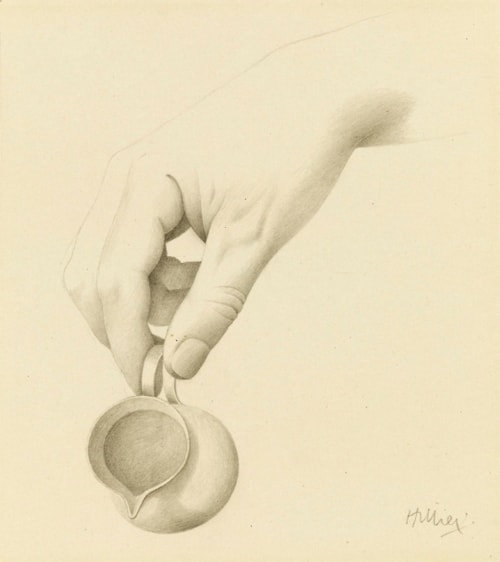
Tristram Paul HILLIER
Peking 1905 - Bristol 1983
Biography
Born in China, Tristram Hillier was trained at the Slade School of Art in London 1926 and at the Atelier Colarossi in Paris, and also spent some time in the studio of André Lhote. In Paris he met and befriended such artists as Georges Braque, André Masson and Max Ernst, and was drawn into the milieu of the Surrealists. He was active mainly as a landscape and still life painter, and also painted the occasional religious subject, all in a very precise manner with a high degree of finish. His paintings were preceded by detailed preparatory pencil drawings, executed with a confidence and exactitude that are characteristic of all of his drawings. He had his first one-man exhibition at the Lefevre Gallery in 1931, and in 1933 joined Paul Nash’s Unit One group, associating himself with the English Surrealists. Hillier lived in the South of France until the outbreak of the Second World War, after which he settled in Somerset, where he painted agricultural subjects with the same exactitude as his landscapes and still life subjects. Hillier exhibited widely in England and elsewhere, and was elected to the Royal Academy in 1957.
Tristram Hillier’s return to the Catholic faith of his childhood ensured that he remained deeply religious in his mature years. As he recalled in his autobiography, ‘One morning in a tawdry little chapel of a country town, I suddenly became aware with absolute certainty that the Miracle of the Mass which I was attending was not only true but was in fact no more remarkable than the existence of the little church itself or my own presence there…I had neither reasoned nor had I consciously prayed, but I knew at that moment and for some time afterwards a serenity of mind and a depth of happiness that I had never before imagined.’ Hillier’s religious convictions and deep spirituality was at times vividly expressed in his work.



